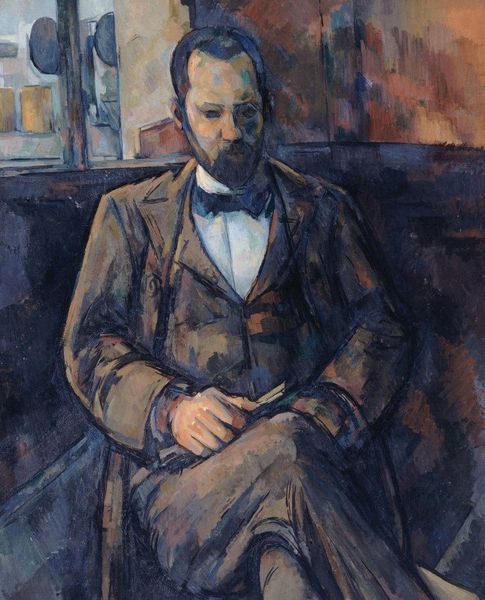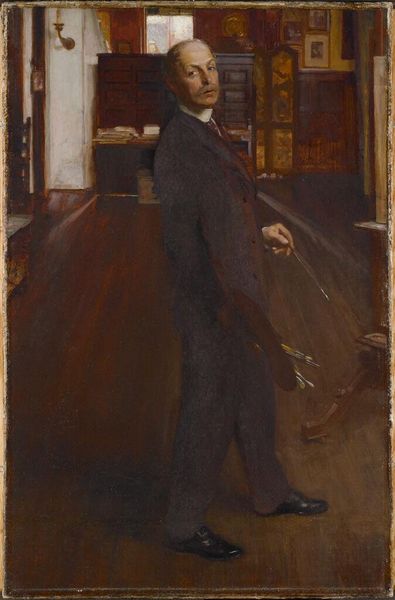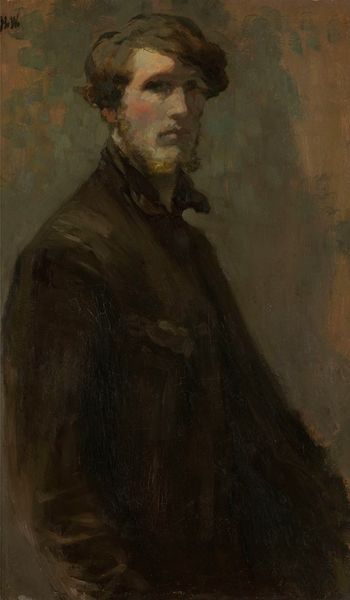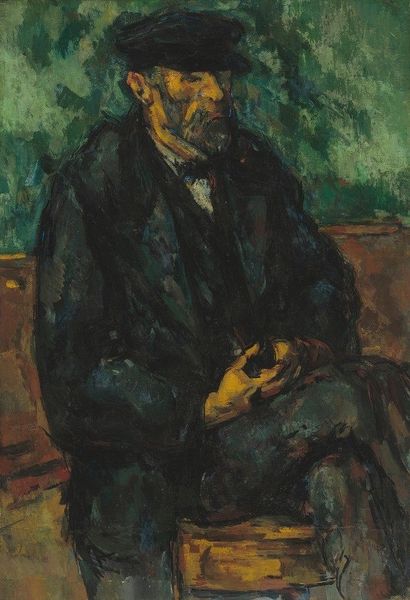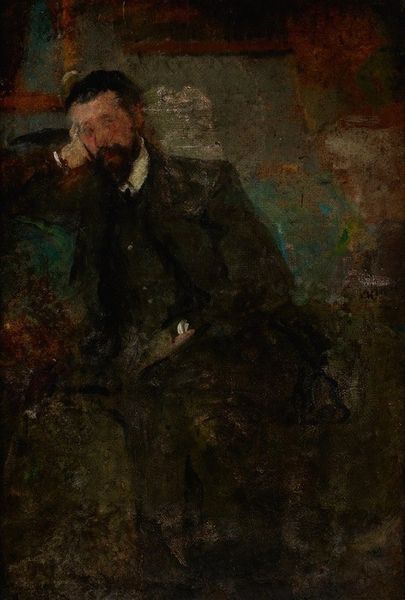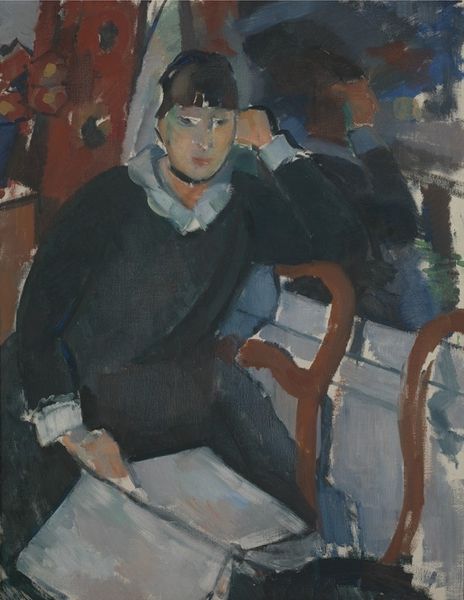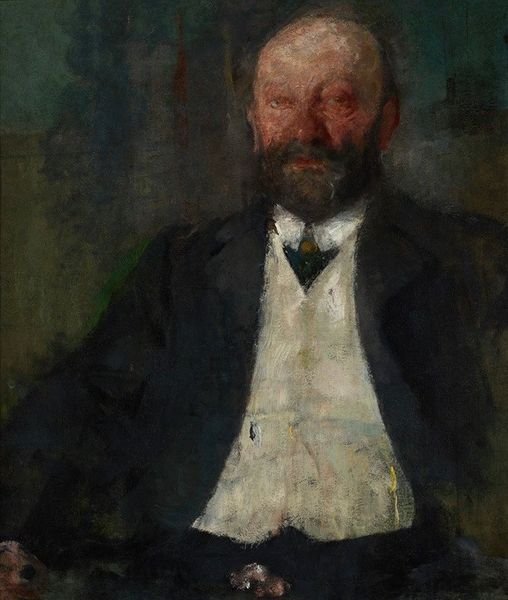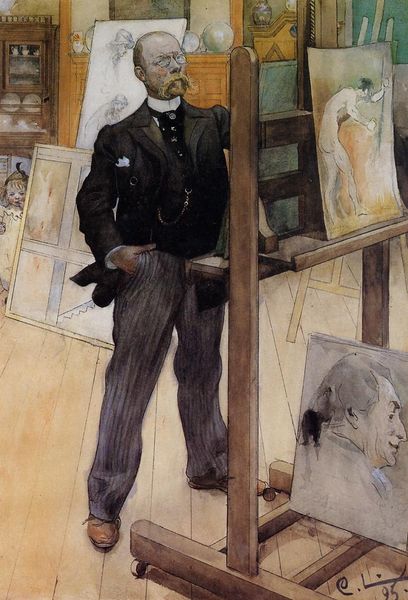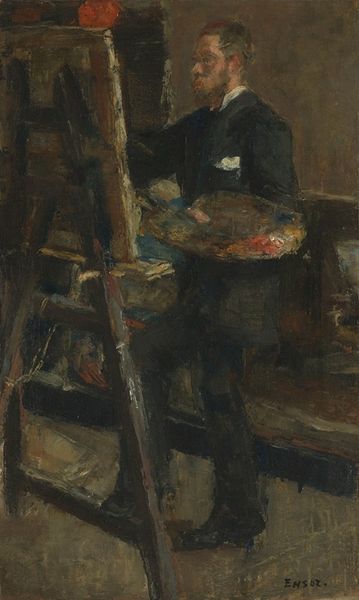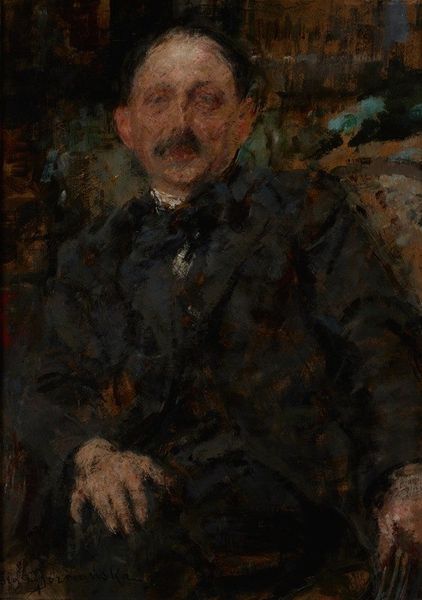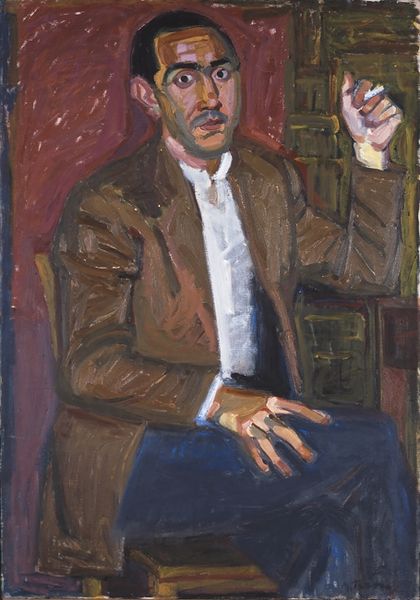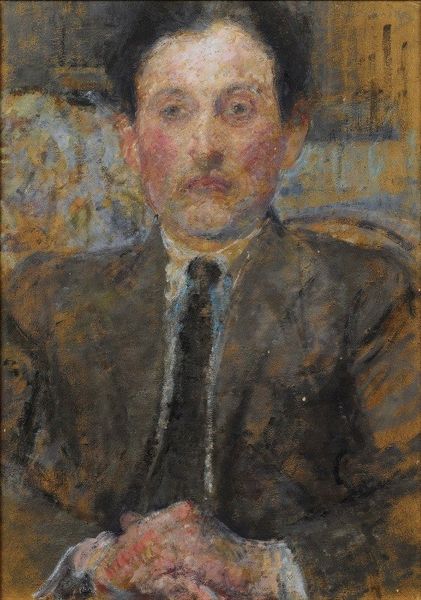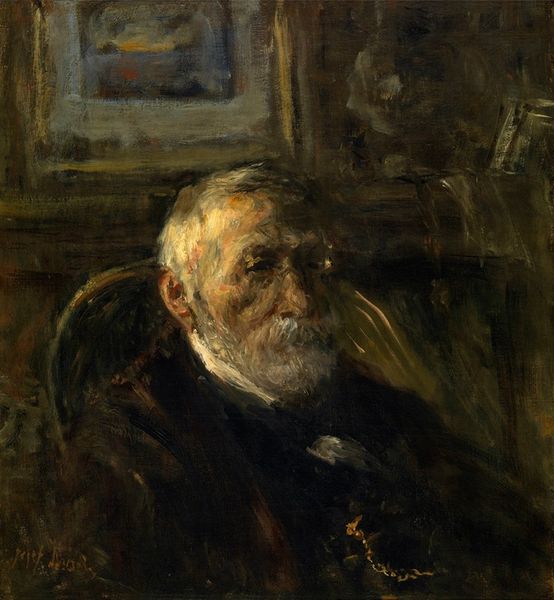
Copyright: Public Domain: Artvee
Editor: We're looking at "Theo Hannon," an oil painting made in 1881 by James Ensor. It depicts a seated man in profile, but it’s the thick brushstrokes and muted palette that really stand out to me. What compositional elements strike you most when you view this portrait? Curator: Initially, the formal relationships are most compelling. Note the contrast between the heavily worked areas, particularly around the figure and palette, and the more thinly painted background. Ensor's visible brushwork disrupts any conventional sense of realism, emphasizing instead the act of painting itself. Editor: So, it's more about the surface and the process than representing Theo Hannon exactly as he appeared? Curator: Precisely. Consider the interplay of light and shadow. Is it used to model the figure in a traditional way, or does it serve to flatten the image and call attention to the picture plane? Observe how the planes of color, applied with visible strokes, build up a sense of form, yet simultaneously resist any illusion of three-dimensionality. Do you perceive a tension between representation and abstraction here? Editor: I do now. I was expecting a traditional portrait, but it seems like Ensor's more interested in exploring paint and form. The more I observe this piece, the more I see how its formal qualities convey his visual intent. Curator: Indeed. By attending to the formal qualities, we begin to decode Ensor’s visual vocabulary. It is not merely a representation but a statement about painting itself. Editor: Thanks, seeing the painting through a formalist lens has helped me grasp Ensor’s artistic intention. Curator: My pleasure. Exploring these elements unveils the complexity of the artistic process.
Comments
No comments
Be the first to comment and join the conversation on the ultimate creative platform.
